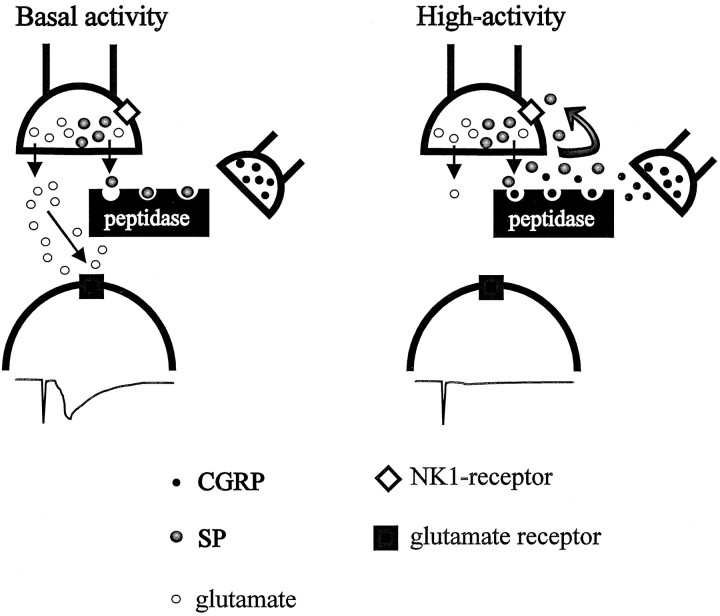Fig. 7.
Schematic diagram illustrating the possible actions of SP and CGRP within the PBN. Left, Under basal conditions, the SP coreleased with glutamate is degraded by an efficient (endo)peptidase, preventing it from reaching its presynaptic NK-1 receptor. Thus, sufficient glutamate is released to produce a postsynaptic response (lower trace).Right, Under conditions of excessive afferent input, sufficient SP is released to overwhelm the peptidase, resulting in activation of its receptor. In addition, CGRP similarly released under conditions of high afferent activity increases the availability of SP by competing with it for sites on the endopeptidase. Thus, glutamate release is more profoundly inhibited, and the postsynaptic response is attenuated (lower trace).

